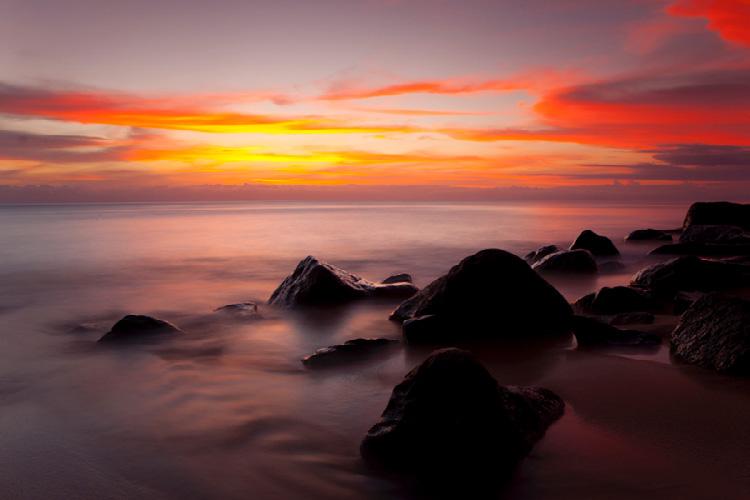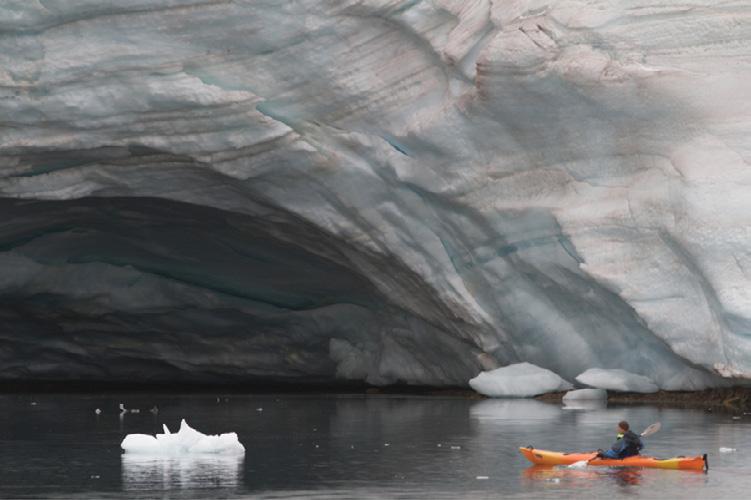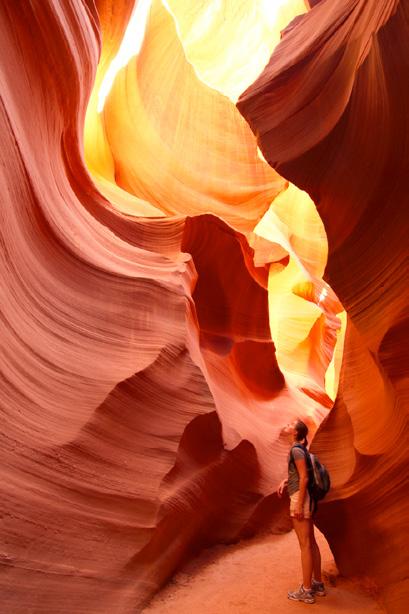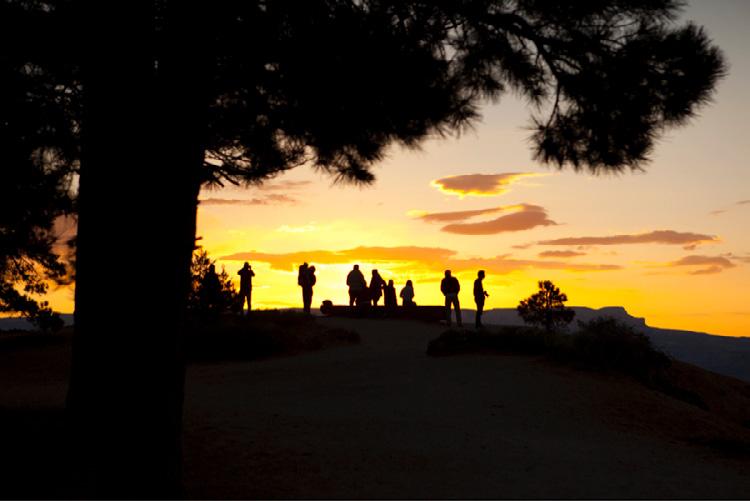
2 minute read
LANDSCAPE
The frame of your photo can be virtually anything you find that provides shape and contrast to the photo. While trees provide a wonderful frame for many shots found in nature, rock formations work very well, too, as in the first of the above photos. Even intangible things like shadows can frame a shot, which served this photo well when attempting to portray the massive and mysterious “narrows” of Zion National Park in Utah.
While it’s often critical to employ rules of composition in your landscape shots to make the most of them, it’s also critical to add gusto to these shots. In addition to using natural features to “frame” your shot, including a foreground element is also a valuable tool.
Foreground elements can come in a variety of shapes and sizes, from rocks in the tidewaters of the beach to a kayaker paddling through icebergs in Antarctica. In fact, one could say that the foreground element becomes the actual subject of the shot, drawing the eye toward it with the landscape in the background just that—in the background. The truth is that for many people that were not with you when viewing a landscape, it can look quite flat with no appreciation for its scale or context. Adding something in the foreground solves this dilemma by providing context and scale in a remarkable way.
One of the most powerful tools to provide context and scale, especially with photography while traveling, is the human element. It can seem counterproductive to take a lovely shot of a natural landscape, the beauty of which lies in the pristine remoteness it exudes onto the viewer, only to put a human right smack dab in the frame. Who wants to look at a person in their wilderness shot? Well, it’s not always the solution to creating a more dynamic shot, but sometimes it can indeed have wonderful effects.

The power that the human element has is that it allows the viewer to imagine themselves there in your scene. And voila, the photo becomes that much more revered because of the relationship the view instantly has with your photo.


Humans are one of the best ways to show scale in a photo. While animals, plants, rocks and other foreground elements work well, too, the human form is much more relatable such that the viewer can instantly appreciate the relative size of the surroundings much better. In the case of the above photo, the girl in the shot gives a clear indication to the size of this slot canyon. And as an added bonus, it allows the viewer to relate to her and imagine themselves in that canyon, awed by its austere beauty just as she is.
Landscapes are some of the easiest things to photograph, yet as a style of photography, one of the most difficult to master. To take your photos from good to show-stopping, it’s critical to add more to the landscapes that sweep you off your feet. By adding creative elements of composition, context, scale and even storytelling by adding the human element, you can make landscape shots multidimensional and endlessly evocative. Through a few simple considerations, you will be well on your way to mastering one of the more venerable forms of photography out there.
Recap
• Employ traditional composition rules while keeping your eye out for outside-the-box creativity.
• Consider adding elements to the photograph beyond the landscape itself, especially elements in the foreground.
• Take your shots to the next level by adding complexity and scale to provide context to the scene you’re shooting.










